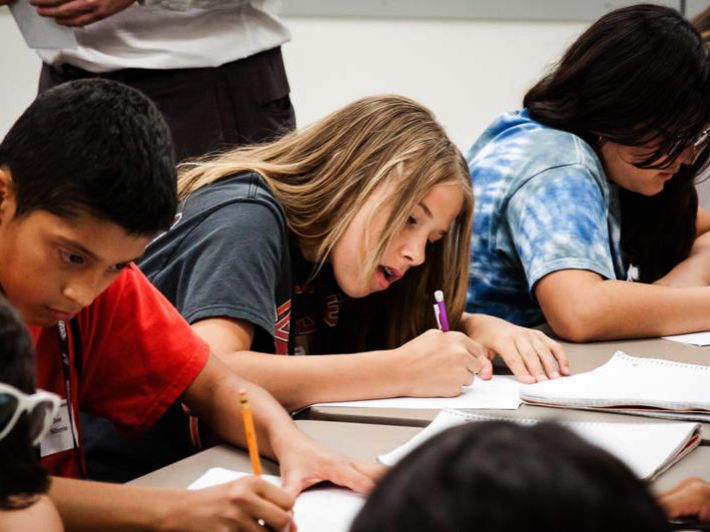Children in the Coronavirus Pandemic: How Society Colonizes their Future
| Datum: | 05 maart 2021 |

Bertus F. Jeronimus & Anne Margit Reitsema. Developmental psychology, University of Groningen
The greatest victims of this first year of the coronavirus pandemic have been the children. Children need to feel safe and seen but were exposed to the emotional strain of their parents dealing with anxiety, tension, stress, grief, shock, economic insecurity, juggling of care and work responsibilities, and sickness. From age two onwards, children start to be aware of such profound changes in their lives, but their understanding of the events happening around them is limited, and they could not anticipate and/or escape the harms of the situation. To a young mind, time, space, and human agency can all seem distorted, compressed, and mysterious, and media exposure on the virus may have further aggravated mental distress. Daily routines changed while their social infrastructure crumbled as children were forced to distance themselves physically and socially from family (e.g., grandparents), friends, teachers, and neighbors, who were now also wearing face masks. Lockdown put a halt to social gatherings and school/day-care and associated peers and friends, hobbies, and sports. Child neglect and abuse soared during the pandemic (Europol reported a >10 fold increase during the first lockdown), as well as parental mental health problems and substance abuse. These consequences will only be exacerbated by the economic recession that will soon follow.
The national lockdown of daycare and primary schools has never been supported by empirical evidence because illness was rare among youngsters who were also over 4 times less likely to spread the infection. Instead, the lockdown was a pragmatic and instrumental decision taken by the Dutch government to accommodate societal pressure (wave 1) and to keep parents at home (wave 2). Especially children from low socioeconomic status backgrounds bear the negative consequences concerning the development of their physical health, cognitive and socioemotional skills, personality, and mental health. The closing of schools (affecting >1.5 million children) and secondary education (1 million) was even more detrimental. It has been estimated that every extra year of secondary education can result in a 5-10% increase in income per year, along the lifespan, which may give you a feel for the potential costs of impoverished education. Already 5-10% of Dutch children left their secondary school being practically illiterate in the period before SARS-CoV-2. And the largest price children pay may not even be academic but a disconnection from people, nature, school, values, and society.
The pandemic has left children missing out on many developmental milestones. From play dates to birthday celebrations to holidays, vacations, funerals, sleepovers and sport games, infatuation and heartbreak; all of these are key learning opportunities to acquire and practice essential social connections and skills. Gatherings with family and friends are the settings in which children normally learn to celebrate or grief collectively. Children are still learning how to communicate their feelings, such as stress, anxiety, frustration and gloom. The pandemic has made it even more difficult for children to understand and manage their reality, and to separate truth from fantasy, which is reflected in their developmental worries. Children now only had their primary caretakers as teachers of social and emotional skills, many of which struggled themselves to keep up with work and other demands. The first lockdown may have felt exciting and new, but soon children became uncertain about their future. Studies showed that many children reported reduced well-being and physical health, and increased anxiety and depression, loneliness, and suicidal ideation over the winter of 2020-2021 (vs. same period 2019). Parents reported that their children were up in the middle of the night sobbing and worrying, afraid they would never be allowed to return to daycare or school.
We have been colonizing our children’s futures because our priorities and attention in 2020-2021 went to the most vocal adults, while the consequences for children will surface over the next decades (and it may take 5-20 years before coronavirus is properly endemic). We even threaten to pass the costs of the pandemic to their future as well, next to those of the climate crisis, which we prove unwilling to change, despite witnessing one of the largest extinction events in history. Moreover, proper herd immunity required the vaccination of children (aged ≤16), about 20% of western populations, but no vaccine will be available for elementary school children up until 2022. We have a moral obligation to consider the consequences for Dutch children in terms of their income, wealth, liberty, and opportunities, and to direct our communal assets and abilities to improve their position (e.g., Rawls, Singer, Kant). For the future of our nation we must increase the budgets of our schools to improve the quantity, quality, and position of our teachers, with more resources for topical knowledge and autonomy, an academic degree, improved teacher materials, smaller classes, and higher salary and status. This should help raise the educational standard for the whole population rather than an elite fraction. By the time they reach the age of 18 most Dutch children watched more hours of TV than they spent time in classrooms.
Parents can look for an unpressured time and talk about their child’s feelings, and to let them know that fears and worries are normal, especially in a time such as this.2 Listening makes children feel safe. Typical childhood anxiety peaks around age 9-10 when children start noticing the news and global events more, and distant calamities can feel close to home. Developing a healthy emotion vocabulary in childhood will serve children along the lifespan to cope with stressors. Help children to identify their emotions, to figure out where their emotions are coming from, where they feel them in their body (e.g., sweaty hands and heart beats), and how their intensity ebbs and flows. Talk with children about their thoughts, help them to separate thoughts from feelings, and to separate hearsay from real and important health information (e.g., what is a virus, how is it transmitted, why are some people are more vulnerable). Give children some sense of control back in their lives, by allowing them to make small decisions during the day. In other words: Talk, share, and feel.



